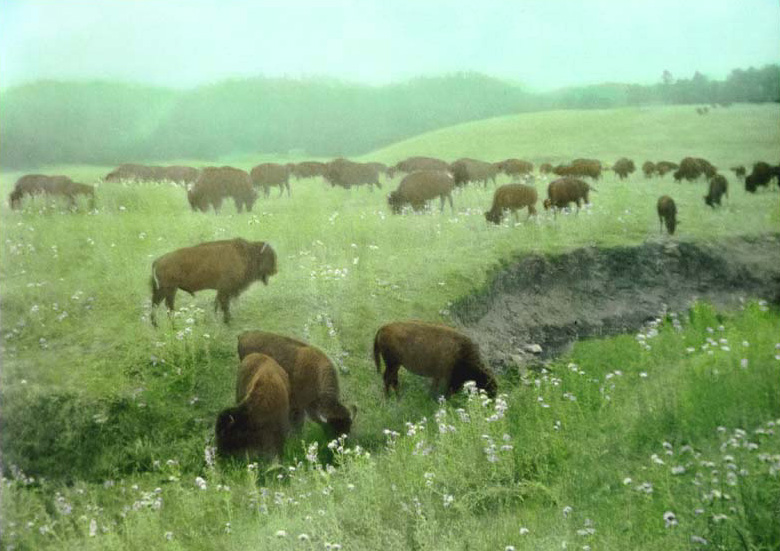FAULKTON, SOUTH DAKOTA — The sprawling lands of South Dakota have always been central to its agricultural heritage, particularly in the cattle industry. However, the ongoing drought conditions have become a growing concern for its dedicated cattle producers. Recently, nearly 60% of South Dakota is experiencing D1 moderate drought conditions, according to the U.S. Drought Monitor. The remainder of the state is facing D2 severe drought or greater conditions, posing a significant challenge to the cattle operations that are the backbone of the local economy.
Troy Hadrick, a fifth-generation cow/calf producer in Faulkton, South Dakota, remains optimistic despite the harsh weather conditions. ‘I don’t complain much about drought in the winter months,’ Hadrick comments, highlighting how dry winters help him stretch feed supplies. Last summer, Hadrick successfully managed two good hay cuttings out of the three he planted, with an unexpected boon of a third cutting due to late summer rains in August. ‘The third cutting was surprisingly good,’ he adds.
:max_bytes(150000):strip_icc()/Cropped-Bierleweatherstationclip-29ebf358452a4327a24a6a3d279e97b1.jpg)
Troy Hadrick, navigating drought in South Dakota
The minimal snowfall this winter has proven beneficial in some aspects. Hadrick’s operation only received 0.25 inches of rain on September 18, 2024, and as the fall months dried out, less than 6 inches of snow fell over the winter. ‘If we had gotten a bad winter, I would’ve been hurting,’ Hadrick shares, noting how the dry conditions allowed cows to graze on cover crops longer, delaying feeding until post-Thanksgiving.
Despite these advantages in feeding costs, Hadrick understands that reliance on consistent spring rainfall is crucial to mitigate the drought’s impact on pasture conditions and to ensure a fruitful hay season. ‘I’m going to blow through most of the hay I put up,’ he cautions, expressing concern over diminishing reserves.
PIERRE, SOUTH DAKOTA — Meanwhile, Kory Bierle, a fellow fifth-generation cattleman from Pierre, South Dakota, has also been closely monitoring the situation, thanks to a weather station installed on his ranch. The station, administered by South Dakota State University and funded by the Army Corps of Engineers, provides valuable data on precipitation levels. ‘We’re always just two weeks away from a drought, no matter how wet it is,’ Bierle reflects on the precarious weather patterns characteristic of his region.
:max_bytes(150000):strip_icc()/Bierleweatherstationclip-0797926f584d45088d1efa407b275354.jpg)
Kory Bierle with his weather station in Pierre, South Dakota
This winter, Bierle began feeding hay earlier than planned, starting at the end of December instead of the typical end of January. Such adjustments are necessary due to the unpredictability of the moisture levels, and he anticipates having to cull a few calves due to tight hay supplies.
LEOLA, SOUTH DAKOTA — Craig Bieber, vice president of the South Dakota Cattlemen’s Association and a seedstock operator from Leola, underscores that winter droughts can reduce feeding costs due to less snow accumulation. ‘The best time to have a drought [in South Dakota] is in the winter,’ he notes, as cattle can continue grazing for extended periods without heavy snow cover.
Nevertheless, the drought’s persistence has not left South Dakota’s cattlemen and women untouched. With 33% of the state in D2 severe drought and 9% in D3 extreme drought, there are concerns about spring rains’ sufficiency to support pasture and water conditions. ‘If it doesn’t start to rain, that causes issues with poor pasture conditions and water conditions,’ emphasizes Bieber, highlighting the essential role of adequate precipitation for sustainable cattle farming.
As South Dakota’s agricultural community braces for the coming months, the spirit of adaptation and hope remains. Although the winter droughts offer short-term logistical advantages, the pressing need for spring rain is undeniable. The ranchers continue to rely on their ingenuity and experience, always looking forward to ensuring the prosperity of their cattle and the land that they hold dear.
Amidst these challenges, South Dakota exemplifies resilience, with its cattle ranchers working tirelessly to support their operations and their community in the face of adverse conditions. The collaboration between local farmers and institutions also underscores the innovative spirit driving South Dakota towards overcoming the challenges posed by the climate.
